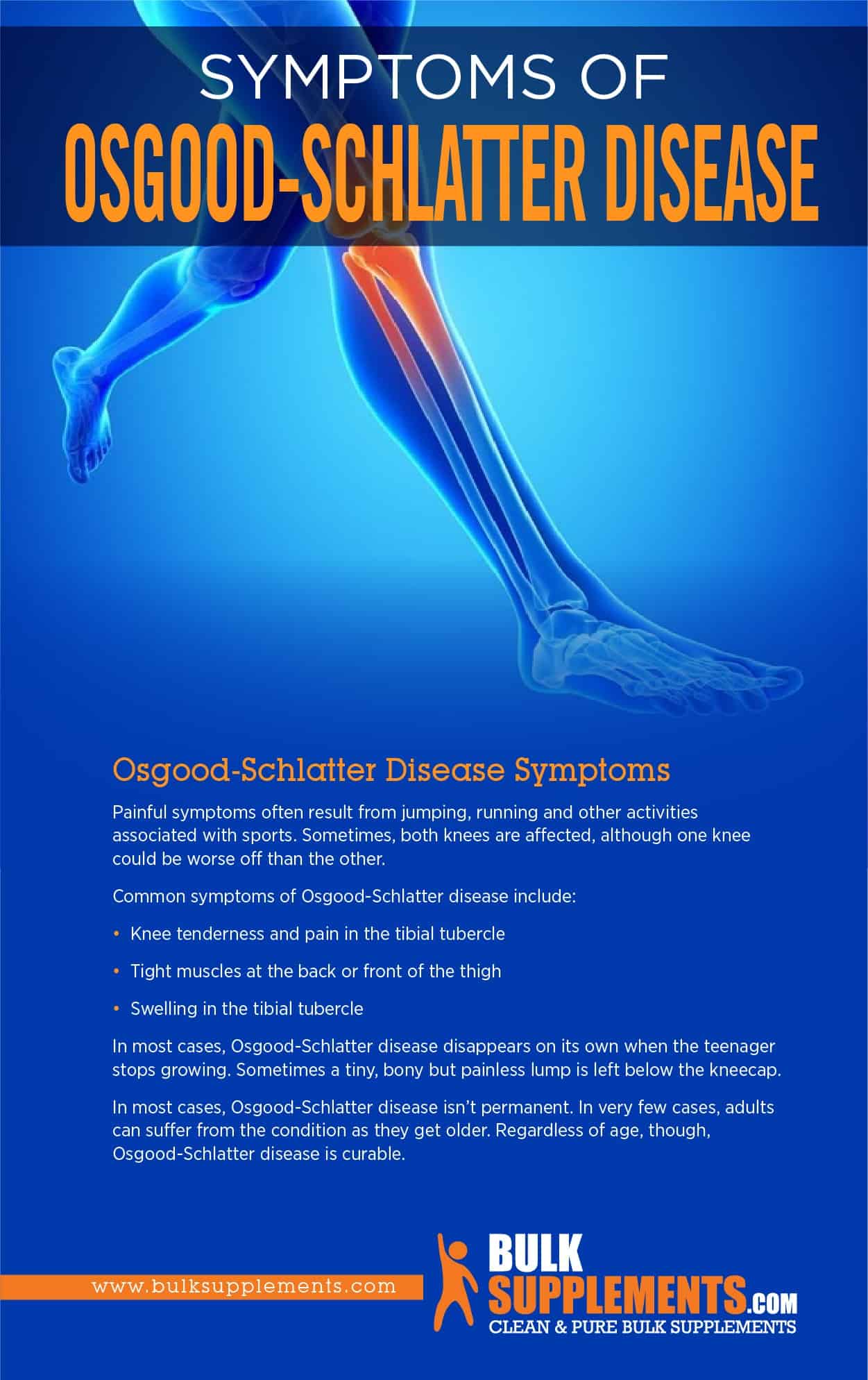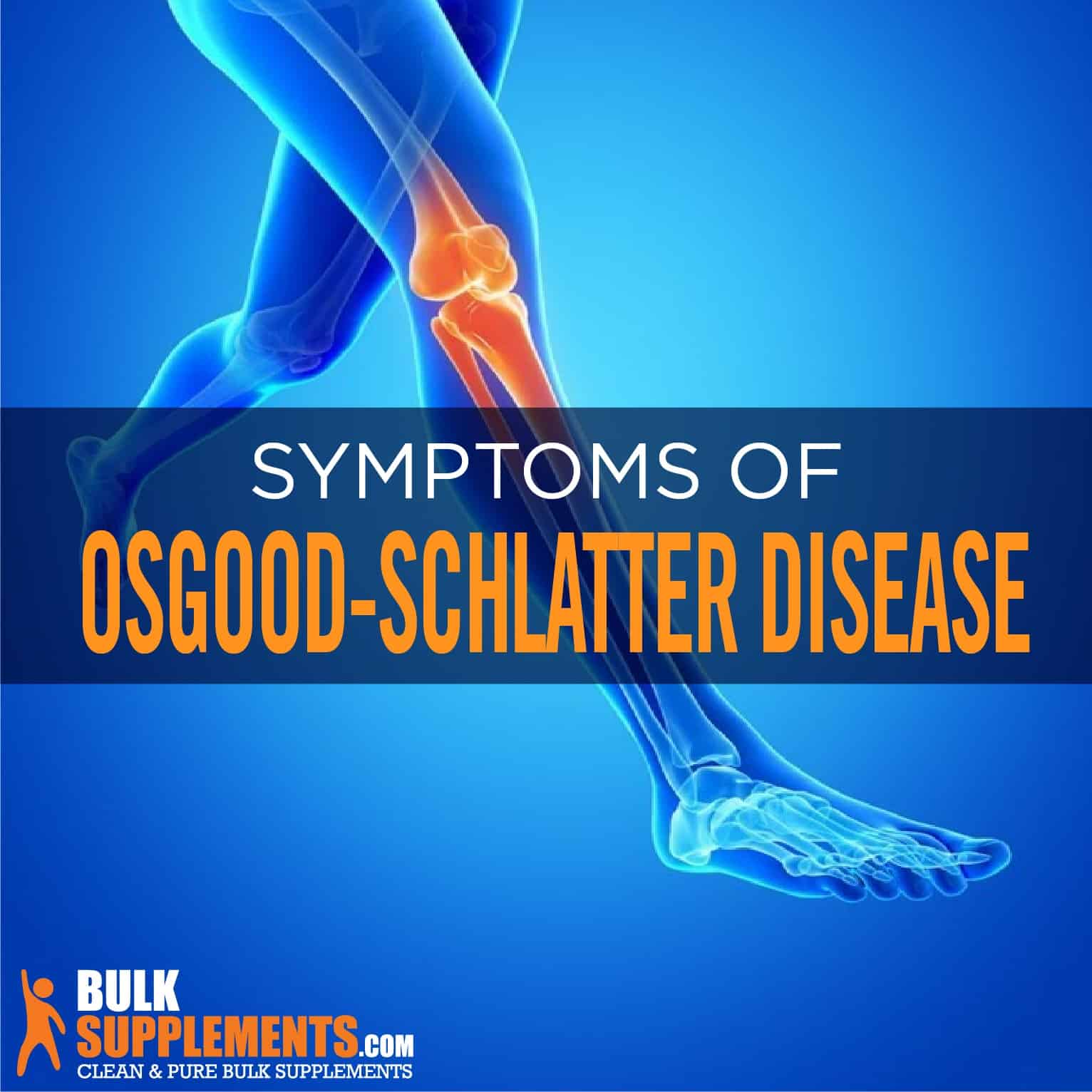Osgood-Schlatter disease is a common health condition that usually occurs in growing teenagers, particularly those going through a growth spurt. The symptoms of the disorder make it impossible for children or teenagers to enjoy routine activities like jumping, squatting, climbing or running. Learning about the causes and prevention of this health concern will help you manage their Osgood-Schlatter condition, so it cannot be a cause for concern. That way, you resolve it successfully. And, you children can continue to live an active life.
What is Osgood-Schlatter Disease?
Osgood-Schlatter disease is a common, short-term health condition that causes pain in the knees of older children and teenagers, particularly those who take part in sports and apply too much stress to their patellar tendon. The patellar tendon connects the bottom of the kneecap to the top of the lower leg. (x)
Activities involving loads of bending and jumping, such as soccer, basketball, volleyball, hockey, ballet, skating or gymnastics, the quadriceps (thigh muscle) pull tightly against the kneecap and patellar tendon.
How Does Osgood-Schlatter Disease Occur?
Connected to the patellar tendon fibers is the tibia (shinbone). Constant pulling against these attachments can cause the tendon fibers to become inflamed around or at their connection to the bone. It results in pain and swelling at the tibial tuberosity, the elevated area atop the shinbone. The patellar tendon connects to the bone at the tibial tuberosity.
This connection between the tibia and tendon is especially susceptible to injury and stress when the bone grows fast, and the patellar tendon remains relatively short. Thus, Osgood-Schlatter disease symptoms usually occur during the growth spurt of adolescents.
Who Does Osgood-Schlatter Disease Affect?
Osgood-Schlatter disease affects up to 20 percent of teenage athletes, affecting more boys than girls. (x) Adolescent growth spurt usually occurs between the ages of 10 and 16 for girls. It happens a bit later for boys (between the ages of 11 and 18). In most cases, symptoms of Osgood-Schlatter disease develop gradually because of repeated pressure on the patellar tendon. The condition is less often caused by a blow to the knee.
Osgood-Schlatter Disease Symptoms
Painful symptoms often result from jumping, running, and other activities associated with sports. Sometimes, both knees become affected, although one knee could be worse off than the other. (x)
Common symptoms of Osgood-Schlatter disease include:
- Knee tenderness and pain in the tibial tubercle
- Tight muscles at the back or front of the thigh
- Swelling in the tibial tubercle
In most cases, Osgood-Schlatter disease disappears on its own when the teenager stops growing. Sometimes a tiny, bony but painless lump remains below the kneecap. (x)
In most cases, Osgood-Schlatter disease isn’t permanent. In very few cases, adults can suffer from the condition as they get older. (x) Regardless of age, though, Osgood-Schlatter disease is curable.
Causes of Osgood-Schlatter Disease
Minor knee injuries may cause Osgood-Schlatter disease due to overuse before the knee fully grows.
The quadriceps muscle (thigh muscle) is a large and powerful muscle at the front of the upper leg. When the quadriceps muscles contract (squeeze), they cause the knees to become straight. These muscles are essential for running, climbing and jumping.
Overused quadriceps in sports during a growth spurt cause the area to become swollen or irritated and cause pain. (x)
Treatments for Osgood-Schlatter Disease
Osgood-Schlatter disease disappears on its own over time. Treatment depends on how severe the symptoms are.
While it might be uncomfortable to partake in activities that bring on knee pain, it is not dangerous to do so. Taking part in activities can help strengthen the hamstring and quadriceps muscles, which is essential for a substantial recovery.
During physical activities, here’s what you can do to help relieve symptoms of knee pain: (x)
- Use a moist, warm compress or heating pad for 15 minutes before a sports activity
- Make sure your sports shoes have shock-absorbent insoles
- Apply ice packs periodically throughout the day and after sports activities — do so for 20 minutes at a time
- Protect the top part of your shinbone with a protective pad
- Raise your leg by placing a pillow below your knee as soon as it hurts
- Use over-the-counter medications, including ibuprofen (Advil, Motrin, etc.), to fight inflammation and pain
- Stretch your hamstring and thigh (quadriceps) muscles twice or thrice a day
Taping the Knee for Osgood-Schlatter Disease
Taping is sometimes helpful for relieving the symptoms of Osgood-Schlatter disease. Place an adhesive tape across the swollen and tender part of the bone (tibial tuberosity) when your knee is bent. Taping the area releases the pressure once the joint has straightened, easing some pain and stress.
Knee and Quadriceps Exercises
Perform exercises that strengthen your thigh (quadriceps) muscles. It can help the muscles pull more evenly against the tendons, distributing the stresses on tendons. Find exercises that help to lower the pressure on knee joints and minimize pain. (x)
Stop Exercising
If you have constant knee pain, it might be necessary to stop taking part in sporting activities for a while. Another option is to wear a knee brace or cast for 6 to 8 weeks. However, remember these weaken the muscles, and this might delay recovery. Consult a physical therapist before wearing a knee brace or a cast.
Surgery
Surgery can be helpful if conventional treatments don’t work. Osgood-Schlatter rarely requires surgery, but if pain persists, you can have a minor operation. It involves getting rid of unhealed flake or bone areas or attaching them to the tibia (upper part of your shinbone).

Home Remedies for Osgood-Schlatter Disease
There are several alternative home remedies you can use to try to relieve Osgood-Schlatter symptoms:
- Peppermint Oil
Peppermint oil may help you treat Osgood-Schlatter disease. You can use it as a powerful natural muscle relaxant and painkiller based on ancient healing arts and research. Studies have suggested it’s especially beneficial for joint pain and tension headaches, so take it to treat the inflammation and pain that comes with Osgood-Schlatter disease. (x)
- Epsom Salt Baths
An Epsom salt bath can help to ease your joint pain, particularly in the knees. (x) Have your child soak in a bath to relieve swelling and pain.
- Eat Spicy Foods
Studies have suggested that spicy foods can help ease pain in the body. (x) Spicy foods have capsaicin, a natural pain reliever that helps ease joint pain. (x)
- Dry Needling
When you’re in pain, the last thing you think of is putting some needles into your skin. But dry needling may help to ease symptoms of Osgood-Schlatter disease. It works on trigger points, letting your body know that there’s a problem, and stimulates your immune systems into tackling the problem. (x)
Supplements for Osgood-Schlatter Disease
Before starting any new supplement, talk with your healthcare provider to ensure no adverse effects based on allergies or other medications. Several supplements can be effective for helping ease muscle and joint pain:
- Collagen
Collagen is the substance that allows for smooth movement of the joints without pain. Studies show that taking more collagen can benefit activity-related joint pain. (x) Like repairing a hinge, adding more grease (collagen) can help the joints move more smoothly. Take 2,500 mg two to four times daily.
- Chondroitin Sulfate Powder
Chondroitin sulfate is naturally in the body and helps maintain healthy joints, bones and skin. It produces collagen, which helps keep your joints flexible and your skin looking smooth and youthful. It also reproduces cartilage, which helps heal wounds and maintain tissue integrity. Take 750 to 1,500 mg daily when using this supplement.
- D-Glucosamine HCL Powder
Consists of amino acids and glucose, glucosamine can help boost your overall health. Though research is scarce, one report published supports combining glucosamine with chondroitin. In the study, participants noticed a significant reduction in pain. (x) As a dietary supplement, take 500 to 1,000 mg one to three times daily.
- D-Glucosamine Sulfate Potassium
Glucosamine sulfate potassium contains both sulfur and glucosamine. Supplementation can help promote good overall health. For this supplement, take 1,000 mg up to three times daily. Nursing or pregnant women should first consult their doctor before supplementation.
- Selenium
Selenium is a vital trace mineral needed for various bodily processes, such as cognitive function, fertility in men and women, and immune system health. It contributes to DNA synthesis and thyroid hormone metabolism and helps protect against infection and oxidative damage. (x)
Various foods contain selenium, including meats, seafood, eggs, brown rice, and Brazil nuts. The selenium level in each food depends on the concentration of selenium in the water and soil where farmers grew the food.
Individual needs may vary, so consult your doctor about the correct dosage for you.
- Vitamin E
Vitamin E is a fat-soluble nutrient that works primarily as an antioxidant. It means it protects against cell damage caused by free radicals. It might help reduce the risk of various health conditions, from cancer to heart disease and possibly even dementia. (x)
Apart from providing cell protection, this vitamin is essential for a healthy immune system. It also promotes healthy hair and skin and helps normalize cholesterol levels. It may also improve athletic endurance.
Where to Buy Supplements for Osgood-Schlatter?
You can purchase these supplements for Osgood-Schlatter at BulkSupplements.com. The company is an industry-leading manufacturer and distributor of pure dietary supplements.
BulkSupplements.com is not just a consumer brand. It also supplies pure ingredients to other food and supplement brands to make their products. All products at BulkSupplements.com are manufactured and tested according to current and proper manufacturing practices.
Are you interested in trying any of these supplements mentioned in this article as a possible solution to helping you with Osgood-Schlatter? Contact BulkSupplements.com to place an order today.
The Bottom Line
Osgood-Schlatter disease refers to swelling and pain under the knee area above the shinbone in growing children and teenagers caused by overuse. It may affect one knee or both. The most common symptoms include swelling and pain under the knee and over the shinbone (tibia). Activities that require jumping, climbing and running can make the pain worse. (x)
Osgood-Schlatter disease may result from minor and often unnoticed injuries brought on by frequent overuse before the knee area has fully grown. The condition is active primarily in athletic teenagers, typically between the age of 10 and 15. It’s prevalent in teens who play sports like soccer, volleyball, and basketball, as well as those who partake in gymnastics. The disease affects more males than females.
Treatment for Osgood-Schlatter disease begins with rest, ice, and NSAIDs like Ibuprofen. In rare cases where symptoms don’t disappear, a brace or cast can help prop up the leg until it recovers. The health concern usually takes 6 to 8 weeks to heal. In severe cases, the injured may require surgery.
Trying supplements, dry needling or essential oils like peppermint may help relieve the overall discomfort and speed up the healing process. Discovering natural ways to help a growing body heal is a more proactive way for the body to adjust to any growth spurt or temporary injury.
These statements have not been evaluated by the Food and Drug Administration. These products are not intended to diagnose, treat, cure or prevent any disease.


